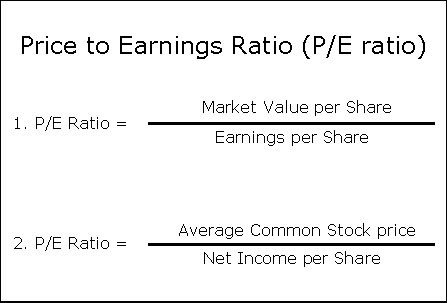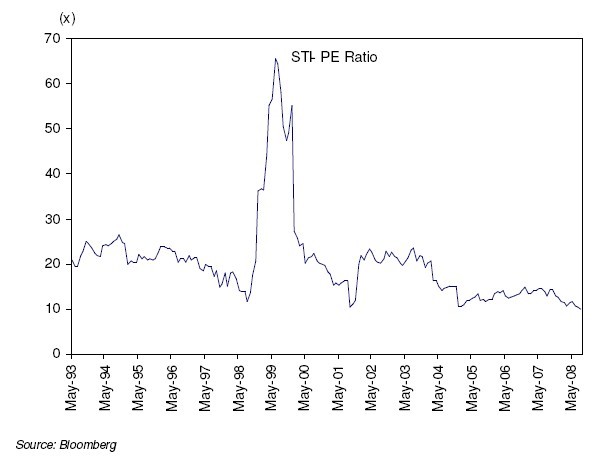Ratios The Price to Book Ratio (P
Post on: 16 Март, 2015 No Comment

The Price to Book ratio or P/B ratio is a multiple that compares the current market price of a company to its book value (shareholder’s equity) .The ratio is used by investors because it shows how much shareholders are paying for each dollar of net assets. Or in other words, it will compare the cost of a stock to the value the company if the company were to be broken up and sold today.
How is the Price to Book Ratio Calculated?
The Formula for the P/Book ratio is fairly straight forward and can be calculated as follows:
Price/Book Ratio = Stock Price Per Share / Shareholders’ Equity Per Share or (Book Value of Equity)
Or another way could be:
Share Price / Total Assets – Intangible assets and Liabilities
In order to calculate the ratio effectively let’s begin by looking at the inputs. Firstly we have the Price of the Stock.
The price figure used in the price to book ratio is simply the company’s market price or share price at the given point in time. These figures can be readily obtained from a number of sources including Google Finance or Yahoo Finance
Book Price or Book Value
So what is the Book Value in the Price to Book Ratio? The Book Value gives an investor an estimate of what would be left over for equity holders if the company were to go bust. In order to calculate the Book Value you will first need to have access to the company’s Balance Sheet. Once you have the balance sheet in hand you will want to subtract the firm’s total liabilities from total assets (keep in mind you should also wish to take out intangible assets from the calculation). So Assets – Liabilities (A-L) which will give you shareholders equity. To better understand this we can bring this back to basics and give a very quick example of how it is calculated:
Balance Sheet for Fintute as of 11/06/2013
Cash 5,000
Accounts Receivable 1,500
Inventory 500
Total Current Assets 7,000
Accounts Payable 6.300
Total Current Liabilities 6,300
Owners Equity 700
Shares Outstanding 200
If we were to use the above figures to calculate the Price to Book ratio we would divide the owner’s equity by the number of shares outstanding to get the Equity Per Share figure of $700 / 200 = $3.5
Assuming that Fintute has a share price of $9.00 what will be the Price to Book ratio? We can calculate this by $9/$3.50 = 2.57 Price to Book ratio.
What does the Price to Book Ratio Mean?
OK so this is great we understand how all the pieces come together and know how to do the calculation but what does 2.57 mean? Is this good? Is this bad?
A ratio of 2.57 means that if the company were to be sold today, the stock would be valued at 2.57 times the price of the company’s assets. A rule of thumb amongst investors is that a P/B ratio of less than 1 will indicate that the stock is undervalued whilst conversely, a ratio greater than 1 may indicate that the stock is overvalued. However this will differ greatly depending on industry, therefore it is important to analyze like for like. For example Tech stocks will be trading at larger multiples whilst finance companies will be trading at lower price to book ratios. To prove this point as of the 11th of June 2013 we will get the following:
Tech

- Facebook FB P/Book: 4.75
- Google P/Book. 3.86
- Linkedin LNKD P/Book 18.97
- Yahoo YHOO P/Book: 2.07
Finance
- Citi P/Book: 0.83
- Goldman Sachs GS P/Book: 1.12
- Morgan Stanley MS P/Book: 0.87
- UBS UBS.AG P/Book: 1.35
However, when researching this I also noticed that many of the UK Banks such as Barclays and RBS were trading at extremely high Price to Book ratios so always do your homework if you are going to use this data in comparing firms.
Can you have a negative Price to Book Ratio?
Yes you can but this would indicate that the assets are worth more than the price per share. This may give some form of indication that the asset prices of the firm have been exaggerated.
What are the Benefits or Pros of the Price to Book Ratio?
- Easy to calculate and understand
- Readily available information
- Good indication of how the market values the firm’s assets against earnings
- Works best for companies with “hard assets”
What are the downfalls or Cons of using the Price to Book Ratio?
- Need to compare with very similar companies
- Does not account for intangible assets such as Goodwill
- Calculations are based on original prices and not “Market Prices”
- Only works in comparing very similar companies in the same industry
- Share buybacks or repurchase programs can lead to lower book values
Like all ratio analysis the Price to Book ratio should not be used as a standalone measure of value. Many investors chose to use this ratio in conjunction with the Return on Equity (ROE) ratio as it gives a clearer indication of the value for an investor.
Summary of Ratios used:
- Price to Book (P/Book)














